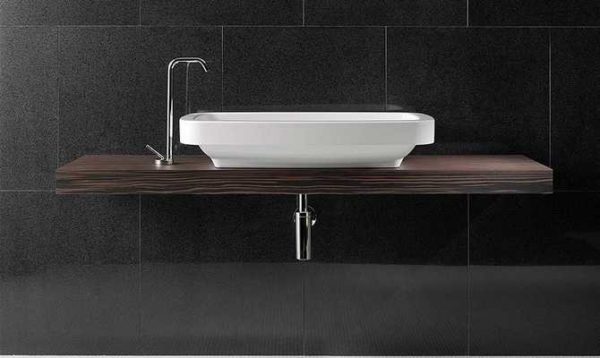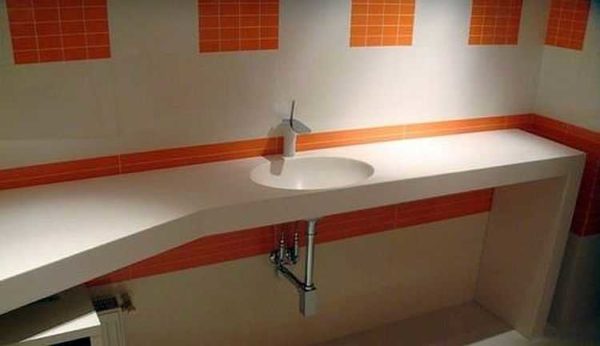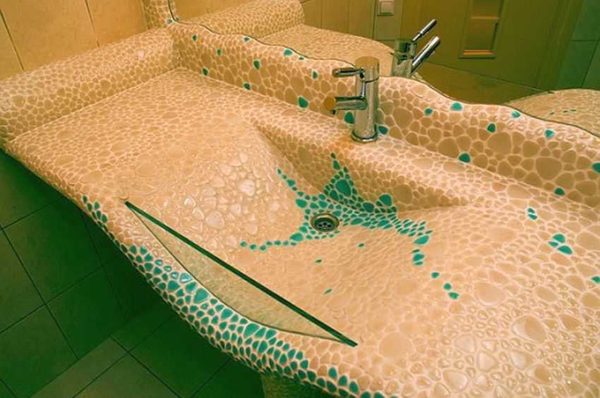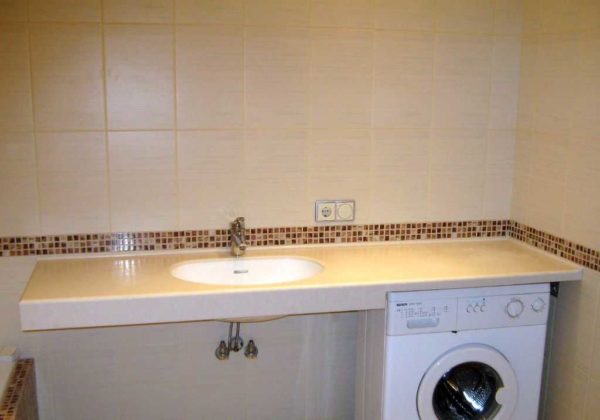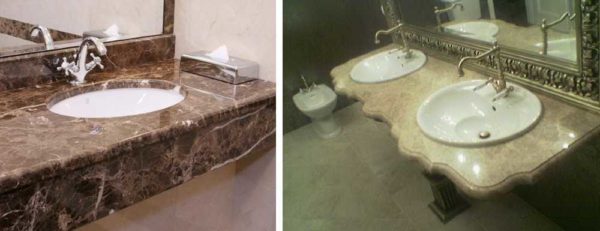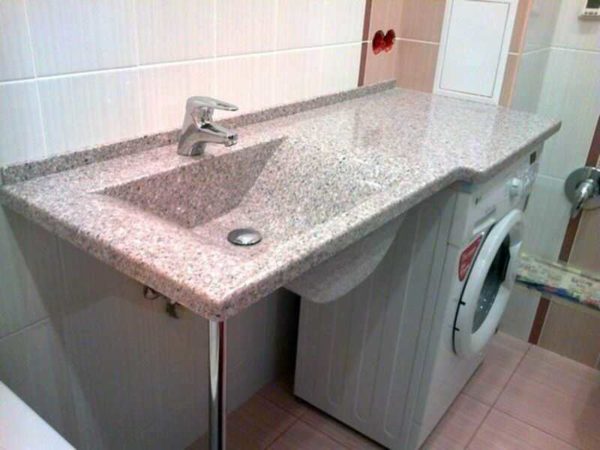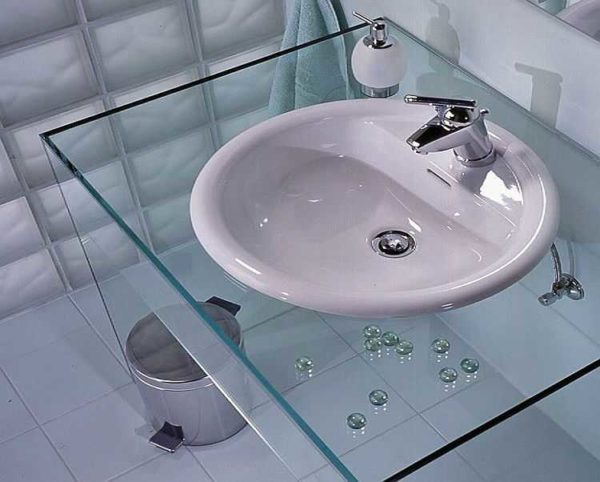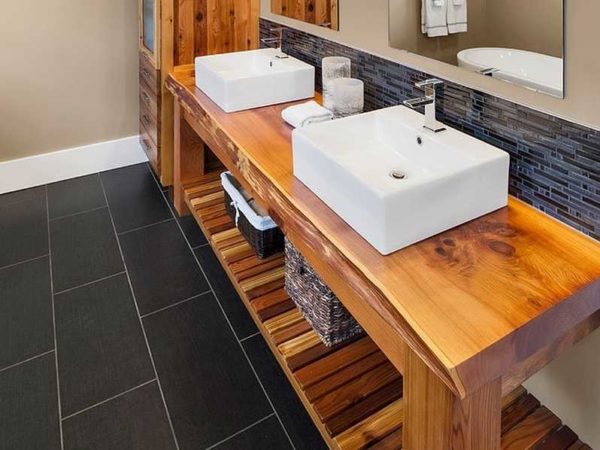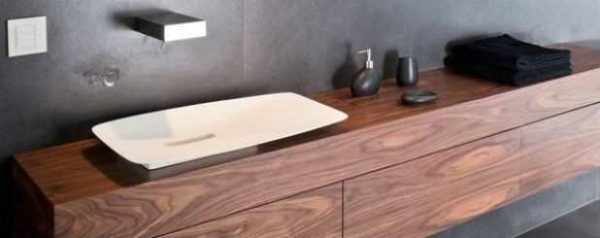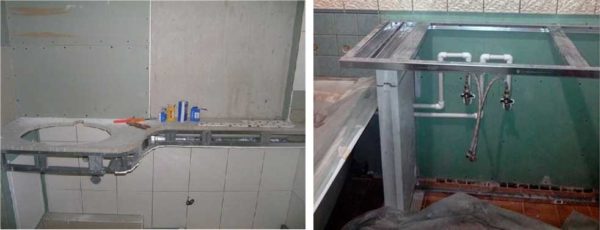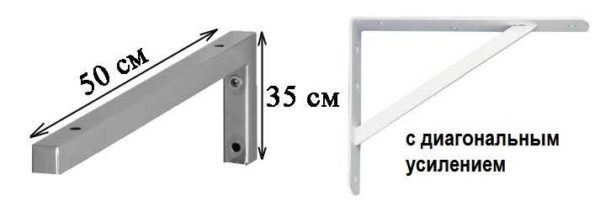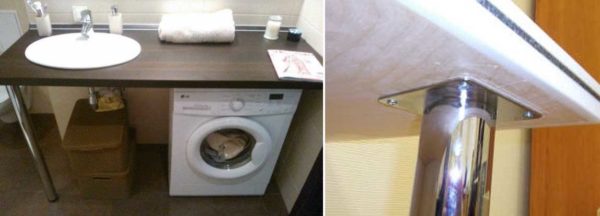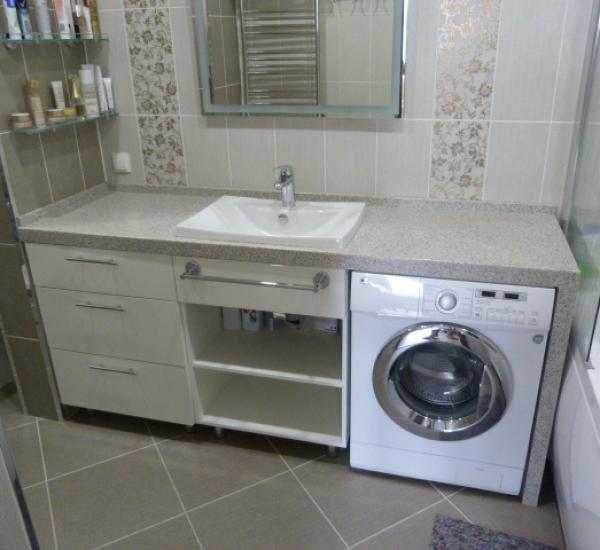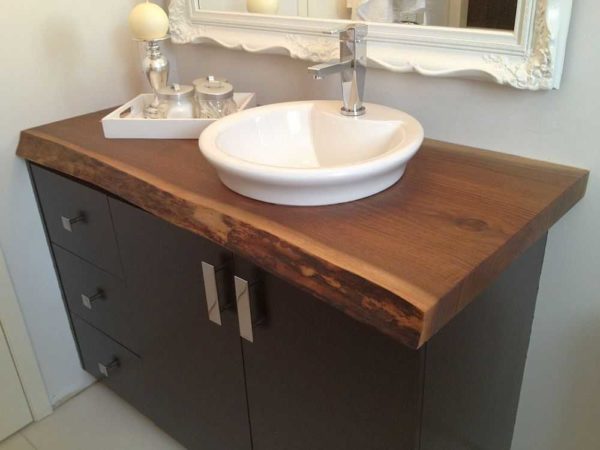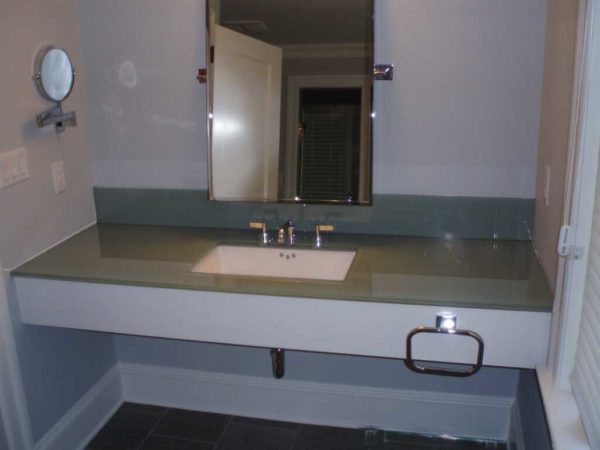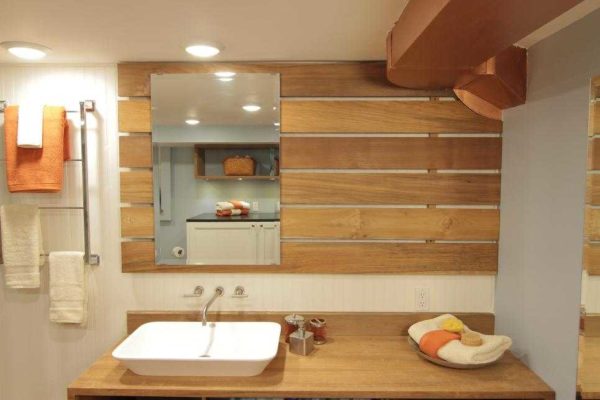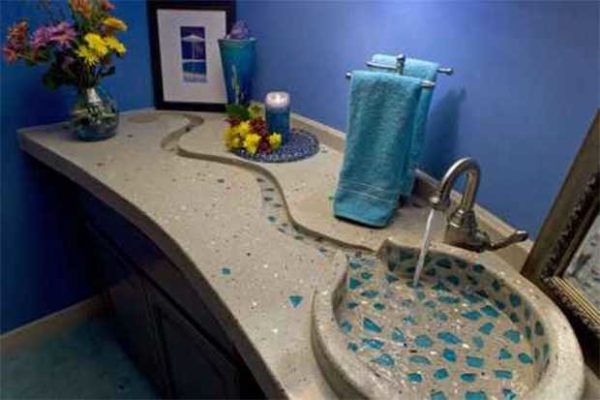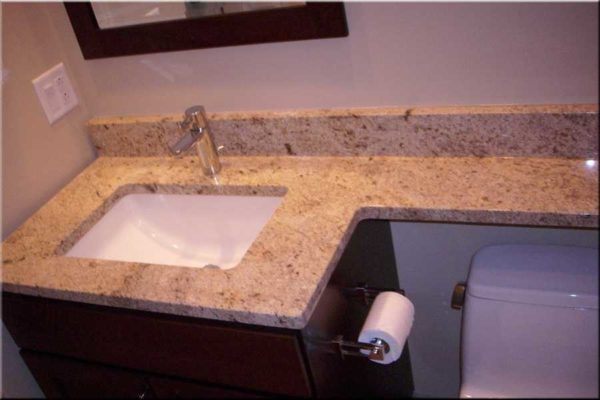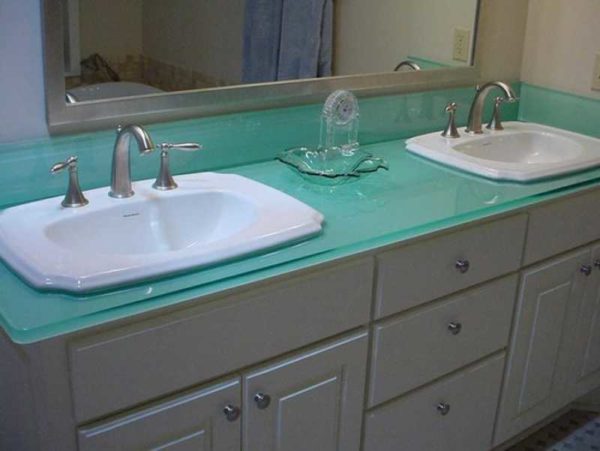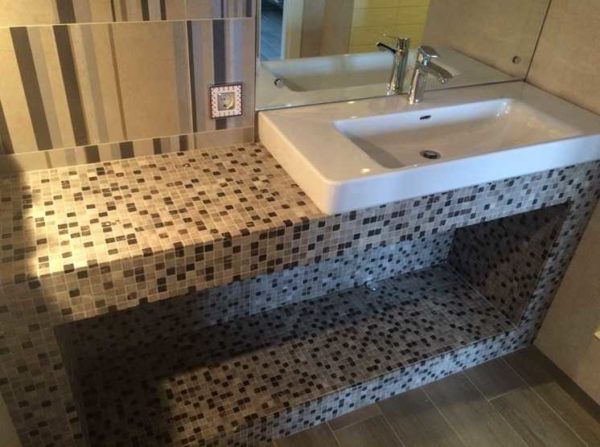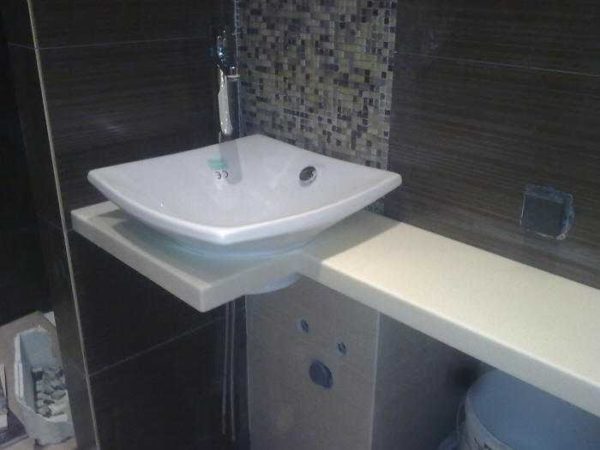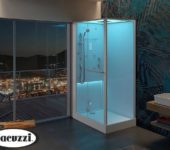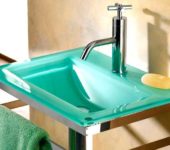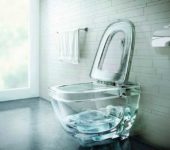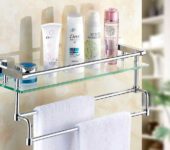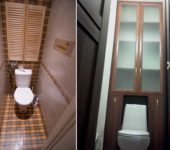Bathroom countertop under the sink: selection and self-production
As it turned out, the bathroom provides ample design opportunities. There are many interesting solutions that give the sanitary space a sophisticated look. Moreover, functionality and convenience do not suffer, but, on the contrary, improve. One such solution is the bathroom countertop under the sink. Instead of the usual drawer unit, there is only a horizontal plane under which you can place a washing machine or a laundry basket.
The content of the article
What materials are they made of
The bathroom countertop under the sink is made of various materials:
- natural and artificial stone;
- Chipboard and MDF;
- glass;
- wood;
- drywall faced with ceramic tiles or mosaics.
Some bathroom countertops for sinks are sold ready-made and you have to choose from those sizes and colors that are available. For many, a sink is offered right away - not all materials can be easily drilled. It is extremely problematic to do this in stone and glass without special equipment. Sometimes a set of tap / mixer and siphon is immediately offered. All the "stuffing" is clearly visible and everything should be in the same style and the purchase of the kit is justified.
Some bathroom countertops - glass, wood, MDF and chipboard - can be ordered from the manufacturer in their own sizes. It will cost a little more than buying a ready-made one, but the perfect match is sometimes important.
The countertop in the bathroom is made of plasterboard "on site", so that it is always self-made, and finished with the same materials as the walls, but mostly with tiles or mosaics. This option is possible for self-production.
Sink with countertop
There are also sinks with a solid-cast countertop (they also call it the other way around - a countertop with a solid-cast or integrated sink). These sanitary ware are made of porcelain, faience, artificial stone. Their device completely excludes the flow of water, since there are no seams - the sink is just a depression in the plane, everything is made of monolithic material. There is only a hole for installing a siphon and a tap (there is not always a tap for a tap, since wall-mounted models can be installed).
Such products look no worse, only porcelain or earthenware do not have such a large selection of sizes and shapes. But products made of artificial stone can be ordered according to individual measurements and they can be of unusual shapes. For example, as in the photo above, there is even a side leg, and the shape is non-standard - one edge is narrower, the other is wider.
How to choose a countertop for a bathroom sink
You can argue endlessly which is better, since there is still no ideal choice. Each material or shape has its own advantages and disadvantages. You can choose the best option for a given situation, but to make a decision, you need to clearly know the properties, pros and cons of each decision. So that the features of operation are not an unpleasant surprise.
Made of laminated chipboard and MDF
Both chipboard and MDF are made from wood residues. It is crushed, then plates are formed from them. The difference is that in the production of chipboard, a coarser fraction is used and a binder is added for strength.This binder releases formaldehyde, which can be harmful to health in large quantities. This parameter - the release of formaldehyde - is monitored and recorded in the documents. It is designated by the Latin letter E and numbers from 0 to 3. The safest class is E0 - the level of emissions is no more than that of wood. Safe E1 - it can be used in the manufacture of furniture for a nursery. The rest of the classes are not approved for residential use. Therefore, when choosing a countertop under the sink, pay attention to this aspect.
During the production of MDF, wood is split into very small fragments, practically into fibers, then under high pressure without foreign additives, it is pressed, gluing together due to the natural binder contained in the wood (lignin). In the finished form, the wood fibers adhere so tightly to each other that moisture practically does not penetrate inside. That is why, if you choose between a chipboard and MDF countertop, you should choose the second option. In addition to being environmentally friendly, it is also less susceptible to moisture. For a bathroom, this is a very important property.
Even if the countertop for the bathroom under the sink is made of moisture-resistant chipboard or high-pressure MDF and covered on top with a laminated film with a pattern, you should not count on a very long service life. The weak point of such products is the edges and the back. Only the face and edge are laminated. The rest are left without protection. To extend the service life, all open sections (cutout for the installation of the sink too) are treated with sealants. For these purposes, sanitary sealants are excellent, you can use silicone for aquariums.
But even with such processing, the service life is several years. And the main condition is that the laminating film on the surface remains intact. Such countertops are easy to clean - all dirt can be easily removed from a smooth surface, but you can only use a damp cloth, make sure that the water does not stay on the surface for a long time, do not use abrasive products. In general, quite problematic.
Natural and artificial stone
In fact, these are two different materials, but the appearance may be similar. The countertop for a bathroom under a natural stone sink is made of a slab several centimeters thick. Holes are made in the right places, then grinded and polished.
These are expensive models that look good in spacious bathrooms. They are durable, not afraid of water, but they weigh a lot, which makes it difficult to install. There may still be problems with leaving. You need to know what stone your countertop is made of in order to know which detergents you can use. For example, marble cannot be treated with chlorine-containing preparations; granite also withstands such tests. So care must be selected individually. In general, it is expensive, beautiful, reliable, but there may be problems with leaving.
Artificial stone is a natural stone crushed to a state of small chips, mixed with a binder (polyester resin or acrylic). This mixture is poured into a certain shape, after hardening, we get a monolithic slab with an integrated sink (or without).
The advantages of this material are the ability to get any shape, a wide variety of colors. Performance characteristics at a height: the artificial stone is not afraid of water, it is easy to care for it, you can use detergents without abrasive (so as not to scratch) and wet rags or sponges. The material is resistant to loads, does not wear off; to damage it, considerable force must be applied.And only countertops using acrylic as a binder have a limitation - at high temperatures it can melt. But if no hot work in the bathroom is expected, you can use such countertops without restrictions.
From glass
The glass top fits perfectly in large and small bathrooms. They are made of thick tempered glass. It can be absolutely transparent or with some kind of shade, or it can even be colored. No one doubts the moisture resistance of this material, but many fear the fragility of glass. There is, of course, a chance to break this glass, but considerable efforts are required for this. In families with small children, they probably should not be installed, but in other cases there are no contraindications.
Just keep in mind that any stains on the glass are very noticeable. You will have to rub the surface to constantly monitor cleanliness. In general, the glass bathroom countertop under the sink is for those who love cleaning.
Wood
Many people think that wood in the bathroom is not the best choice. Perhaps this is so, but with proper processing, it will serve no less than faience or porcelain. Yes, it needs more careful care, but this drawback does not negate the decorative effect of wood.
The wooden countertop for the bathroom under the sink can be solid - a solid piece of wood, or it can be glued together. The second option is less expensive, but no less decorative. To protect it from moisture, the wood is covered with several layers of waterproof varnish. The varnish is glossy, semi-gloss, semi-matt and matt, that is, with varying degrees of gloss. So varnishing is not always a shiny surface. But this protective film is completely waterproof and dirt is well removed from a smooth surface.
Another method of protecting wood from moisture is impregnation with oil-based protective compounds. They protect from water just as well, but do not form a film, but penetrate the fibers, blocking the water passages. Wood treated in this way looks and feels like natural, but the textured surface is more difficult to maintain - the grooves are directly created for the accumulation of dirt and salt deposits.
Wooden bathroom countertops require periodic renewal of the protective coating. The oil impregnation will have to be renewed about once a year (just cover with the same composition again), the varnish coating can last for several years, but its restoration is more troublesome (remove the old one, apply new varnish layers). In general, the care is the same as for wooden furniture, only you need to ensure that water does not remain on the surface for a long time.
Tiled or mosaic plasterboard
Plasterboard countertops are made by master finishers who lay tiles on the walls. If you wish, you can do it yourself. It is necessary to use galvanized profiles (this is important so as not to rust) and moisture resistant drywall. You can also use moisture resistant plywood instead of drywall. Both materials are suitable for subsequent tiling or mosaics.
This type of countertops under the sink in the bathroom is usually made in the form of a table - at least some kind of support is needed, since the weight of the structure with finishing is considerable. The technology for working with profiles and drywall allows you to make both straight and curved surfaces. So the form can be any - at will.
The properties and care of this type of bathroom countertop under the sink are the same as for the finishing - ceramic tiles or mosaics. After grouting with a moisture-resistant compound, the surface becomes waterproof, resistant to mechanical stress and wear.Care is no different - you can use any detergent, even with abrasive particles. You need to be careful with caustic and chlorine-containing products, but not because of the tiles, but because of the seams - they can become lighter.
Installation of countertops
There are three ways to install bathroom countertops:
- Hanging on brackets. In this case, the space below remains absolutely free, which, firstly, makes cleaning easier, and secondly, it gives freedom to place things or equipment. This installation method is called a suspended worktop.
- Installation on legs. The design is more reliable, but the legs are a limitation and sometimes they get in the way.
- Installation on furniture. Making several shelves or cabinets below, and installing a countertop on top is one of the options for arranging a bathroom.
All methods are equally reliable. But the materials must be selected correctly. And the rule applies: it is better to make the mount with a margin of safety. As a rule, the sink in the bathroom costs a lot, so saving on fasteners is more expensive for yourself.
On brackets
When mounting on brackets, choose powerful modules from a corner or profiled (square section) pipe with stiffeners. When installing heavy worktops on corner brackets, it is desirable that they have a diagonal reinforcement.
In addition to the brackets in the form of a triangle, there is a rectangular design. They are suitable for hanging porcelain or earthenware sinks with countertops, as well as lighter versions.
This method looks good and is also convenient: you can hang a hand towel on the bar. In order for everything to look harmonious, the siphon and these stops are chosen in one color and most often it is stainless steel, but there may be other options.
Under the sink
Installing a countertop under a bathroom sink on legs is no different from installing legs on any piece of furniture. Places of installation are marked, the legs are screwed with fasteners, the valley of which is 3/4 of the thickness of the table top.
Difficulties can arise only when installing porcelain, stone or glass products. In this case, you can use an adhesive sealant (based on MS-polymers or polyurethane).
When installing in these two ways, it is advisable to additionally fix the structure to the wall. From below, at the junction with the wall, a metal corner (stainless steel or galvanized) is screwed. This provides additional rigidity and increased reliability.
Installation on furniture
Installation on furniture is even simpler: take aluminum or galvanized corners, or reinforced ones. On one side, they are attached to the partitions of the furniture, on the other, to the back of the countertop (depending on the material, for self-tapping screws or adhesive sealant).
After installation, the junction with the wall must be sealed. You can use a moisture resistant sealant. Better - silicone sanitary or for aquariums, it is also very good on the basis of MS polymers. When installing wooden countertops, it is necessary to look for a compound that can be used with wood.
Photo ideas
If you still can't decide what kind your bathroom countertop should be under the sink, perhaps photos of interesting options will help you.

